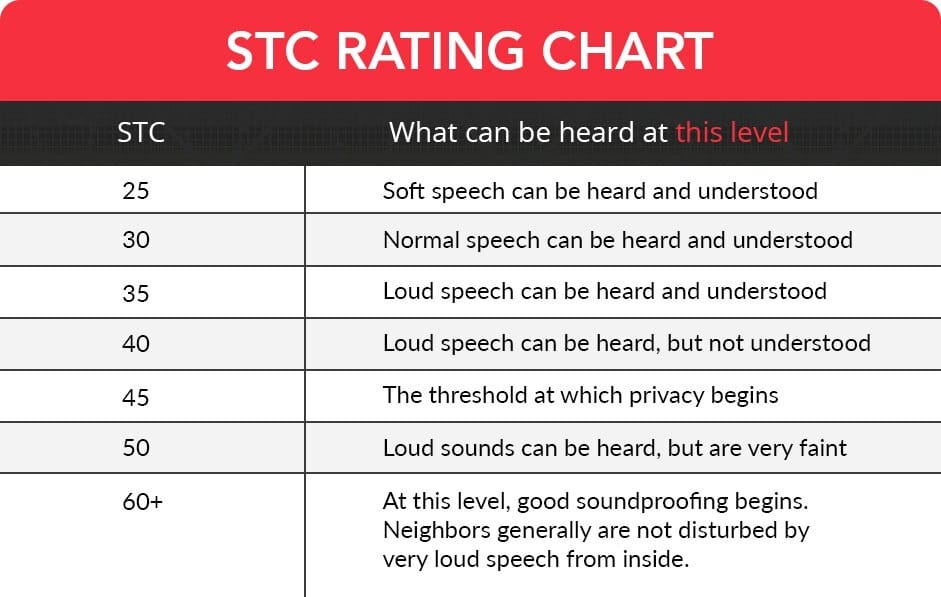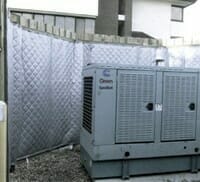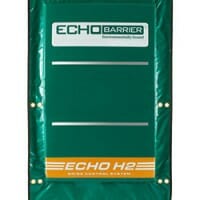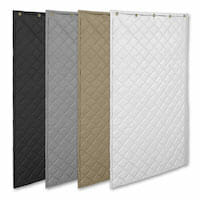Understanding Sound Transmission Class (STC) Rating
If you’re looking to learn more about STC rating, you’re likely planning a construction project, and it’s probably not a tool shed. Sound transmission class ratings generally come up in places where we want to keep sound either in or out, like a sound studio, a road-facing exterior wall, or a bedroom above the garage. When people are evaluating building materials and acoustical products for sound reduction, they rely on the sound transmission class or STC rating of the product. By understanding this rating of materials, we know how much sound will be blocked from going through those materials. It is especially important in commercial construction. The sound transmission class was first introduced in 1961 and has since become the standard single-number metric to describe sound blocking materials. People often mention NRC and STC ratings in similar contexts, but they are slightly different rating systems. While the STC rating tells us how much sound is blocked from going through a product, the NRC Rating tells us how much sound is absorbed by a product. The STC rating is important when you are trying to reduce the amount of sound entering or leaving a room. The NRC rating is important when you are trying to reduce echo and improve the sound quality in a room.
How to Measure STC Rating?
Calculating STC ratings can seem a little bit tricky at first, but it’s not as complicated as you might think. Determining ratings for windows, walls, and ceilings all happen the same way defined by the ASTM E90 standard. The first step in rating a product is to determine the transmission loss of the material at various frequencies. Two rooms with measurement equipment are divided by the material, one designated as the source room, the other as the receiving room. The sound pressure levels in both rooms are compared at various one-third-octave band frequencies from 125 Hz to 4000 Hz. The difference is used to calculate the transmission loss of the material at each of the frequency bands. Each transmission loss value is plotted on a graph then compared to a standard set of STC contours, with the closet matching contour determining the STC rating of the material. If your results most closely resemble the curve for an STC rating of 50, then that would be the rating for the material you tested.
What is a good STC rating?
A good STC rating is largely determined by the type of noise issue you are trying to solve, and the results you are trying to achieve. What works well for normal speech volume between two adjacent apartment rooms may fail miserably when you host garage band practice in your basement. Also, an acceptable STC rating for walls may be different from the acceptable STC rating for floors, depending on whether the walls are shared by a neighbor, or a room is directly beneath a kitchen with heavy traffic. That being said, anything below an STC rating of 40 might garner comments about paper thin walls. At these very low ratings, most things happening on the other side of the wall can be heard.
Is a higher or lower STC rating better?
The higher the rating, the more sound is blocked from going through the material. If your walls have a low rating, you will hear almost everything happening on the other side, and you will even be able to understand someone speaking softly on the other side. On the other hand, if your walls have a high rating, you can play music fairly loudly without disturbing your neighbors. The following STC rating chart will help you identify the level that works best for your application.
STC Rating Chart
| STC | What can be heard at this level |
| 25 | Soft speech can be heard and understood |
| 30 | Normal speech can be heard and understood |
| 35 | Loud speech can be heard and understood |
| 40 | Loud speech can be heard, but not understood |
| 45 | The threshold at which privacy begins |
| 50 | Loud sounds can be heard, but are very faint |
| 60+ | At this level, good soundproofing begins. Neighbors generally are not disturbed by very loud speech from inside. |
What does an STC rating of 45 mean?
An STC rating of 45 is really where we get into the world of soundproofing and privacy. This could be considered a baseline when you are getting serious about preventing sound transmission. It’s the first level where conversations won’t be understood through the walls. Someone in a quiet room on the other side may be able to hear that a conversation is happening, but they wouldn’t be able to understand it, and it wouldn’t be considered disruptive. However helpful this baseline may be, an STC of 45 would be insufficient for insulating things like townhouses and condos, due to the shared walls, floors, and ceilings.
What does an STC rating of 50 mean?
The International Building Code requires an STC of 50 for multi family construction, which is the point at which noise is reduced to a point that people generally feel like their homes are adequately insulated from noise. It is also the point at which respondents to surveys begin a drastic reduction in noise related complaints. With a Sound transmission class rating of 50, speech cannot be heard through the walls, and loud sounds are only faintly audible.
Recommended STC Ratings
If you are unsure of what rating would work for your project, there are some standards you can go by in helping you to determine your target range. The National Research Council of Canada conducted research on the importance of sound insulation, and found that an effective STC rating of 55 is recommended, and 60+ is ideal, especially in rooms where there is going to be music related noise. These values are sufficient to keep most sounds muffled, but if all you are really trying to do is add privacy to your conversations, an STC rating of 45 should do just fine.
What is the STC rating of drywall?
The STC rating of walls has to do with multiple variables. Things like the thickness and air space within the wall can improve the rating greatly. For example, a standard interior wall, meaning two sheets of ½ inch drywall separated by wood studs and no insulation, provides an STC rating of 33, which provides almost no soundproofing. If you add standard fiberglass insulation to the wall, your STC jumps to around 39. While this won’t keep noises in the next room completely at bay, it’s a step in the right direction. If you want to get serious about soundproofing your interior walls, adding a soundproofing backer to your drywall or filling the gaps with acoustic insulation might be the first places to look.
What else should I know about STC ratings?
Sound transmission class rating numbers give you a rough idea of how much sound is reduced in decibels (db). There is no exact correlation from STC rating to db, however, since materials block sounds of varying frequencies differently. The rating works well for things like speech and the daily incidental sounds associated with living or working in a space, but isn’t incredibly accurate when evaluating music or heavy machinery, since those sounds live in lower frequencies, and will vibrate structures differently. When you are adding material or changing construction to improve the STC rating of a surface, it’s important to think about the whole picture. When it comes to soundproofing, you are usually defined by your weakest point. A high STC rating wall can be rendered ineffective by a hollow core door, or a single pane window.
What is a good STC rating for windows?
Your windows’ STC rating is important to consider as we just discussed. A standard, single pane window, offers an STC rating in the range of 26-28, and you can add a few points with well constructed dual pane windows, but if you want to substantially reduce the amount of sound entering through the windows, you should consider adding acoustical window inserts. They easily mount over your existing windows, and will improve your STC rating by enough points to make you forget about the sounds of the outside world.
How can I improve my STC rating?
The easiest way to improve your rating is by adding mass to the walls to increase the overall thickness of the walls. Adding insulation or air space inside walls also hinders sound from passing through the walls. For example, two four inch walls separated with a two inch gap would transmit less sound than a solid eight inch wall. Filling that gap with STC rated insulation, like CFAB Cellulose-Based Acoustical & Thermal Panels will increase the STC rating even more. Adding treatments inside the room will help stop noise volumes inside the room from increasing too much, but making meaningful changes to your STC rating generally involves making some structural changes.
Using what you’ve learned
Now that you know a little more about STC ratings, and how they can soften the sounds of your world, it’s time to decide what that means to you. If you have any kind of noise issues, there are some fairly simple things you can do to take care of them. It all comes down to the source of your noise, and your personal tolerance levels. You’ll never fully appreciate just how annoying those things are until they are gone.







